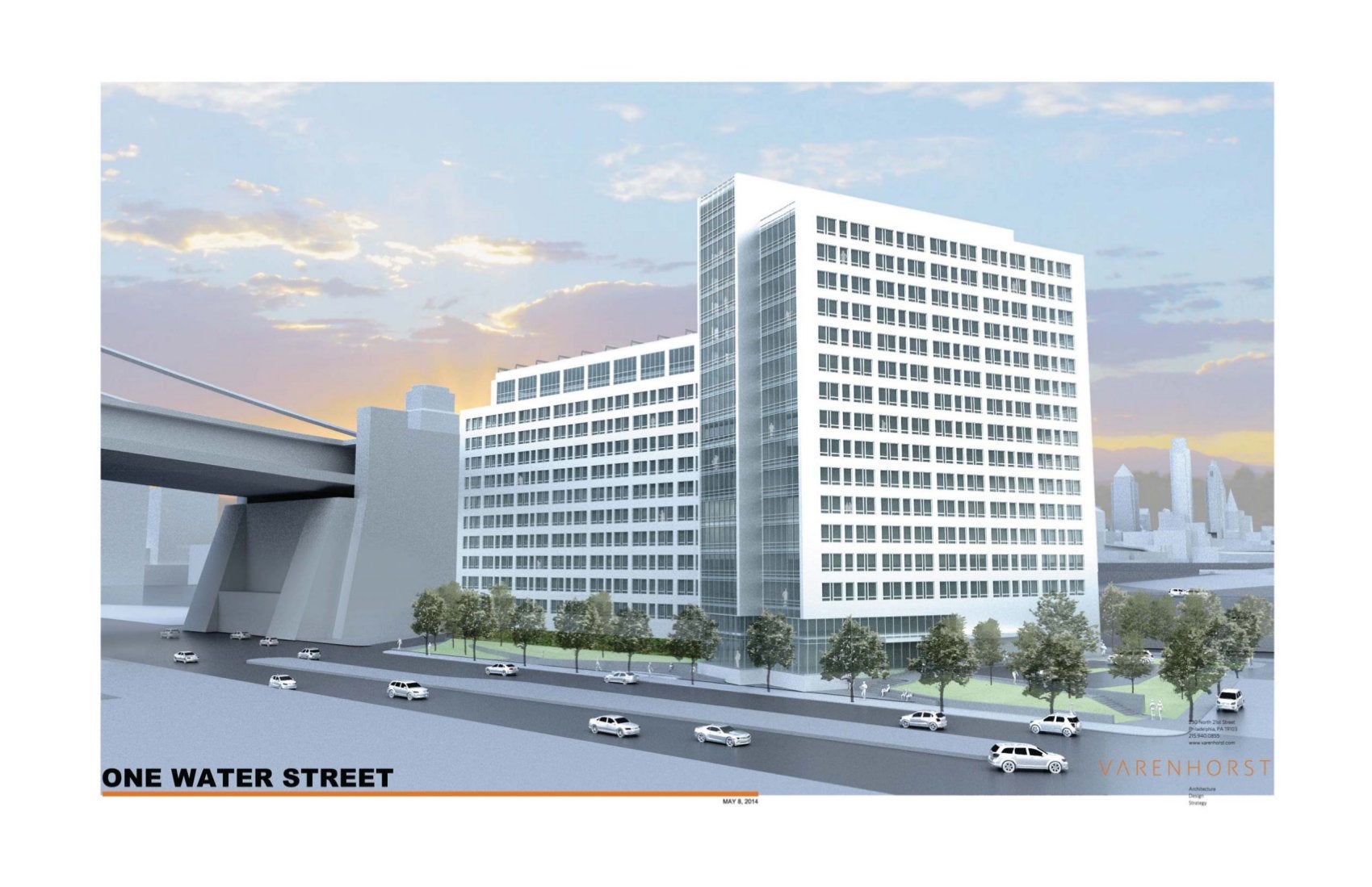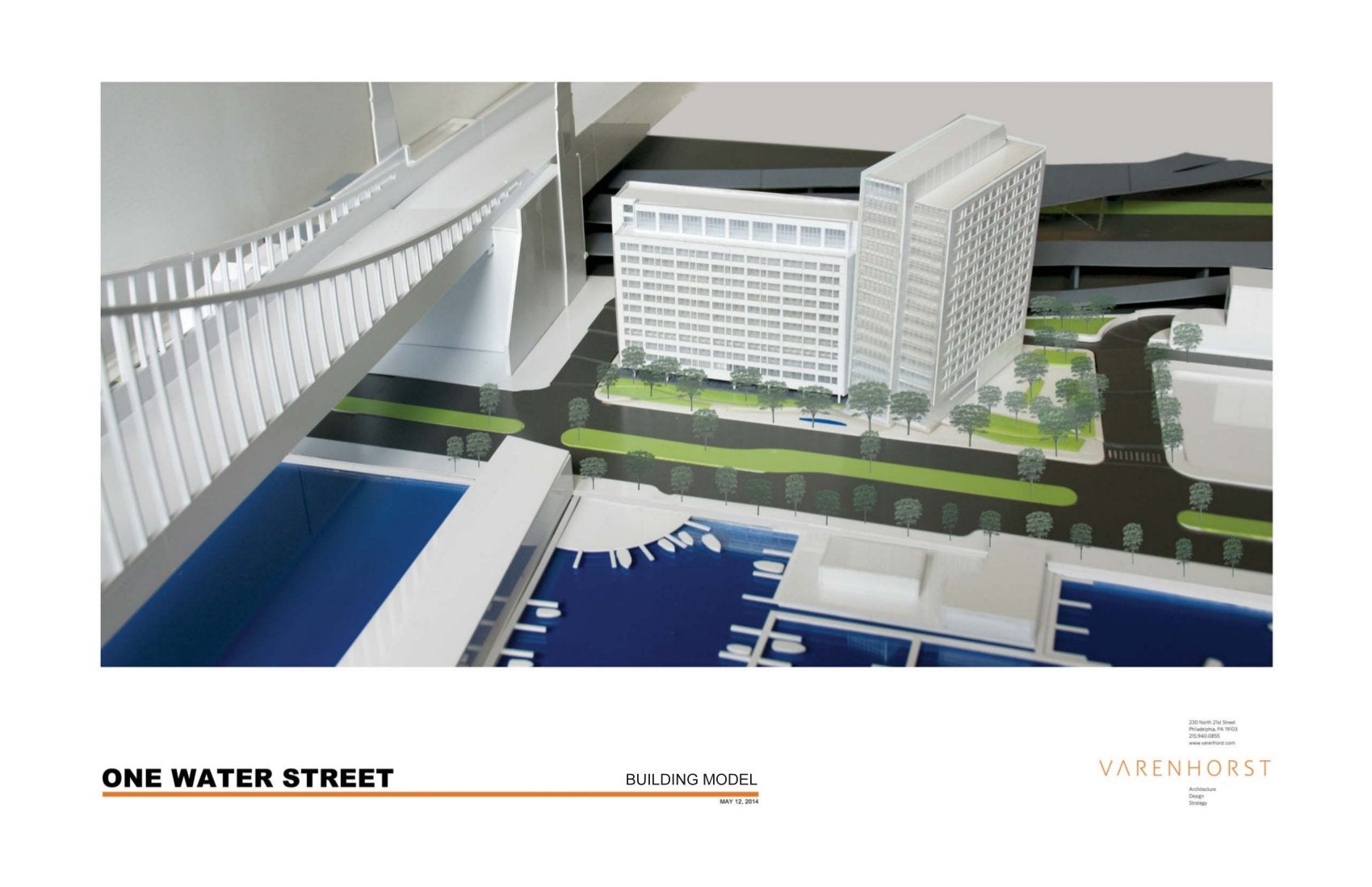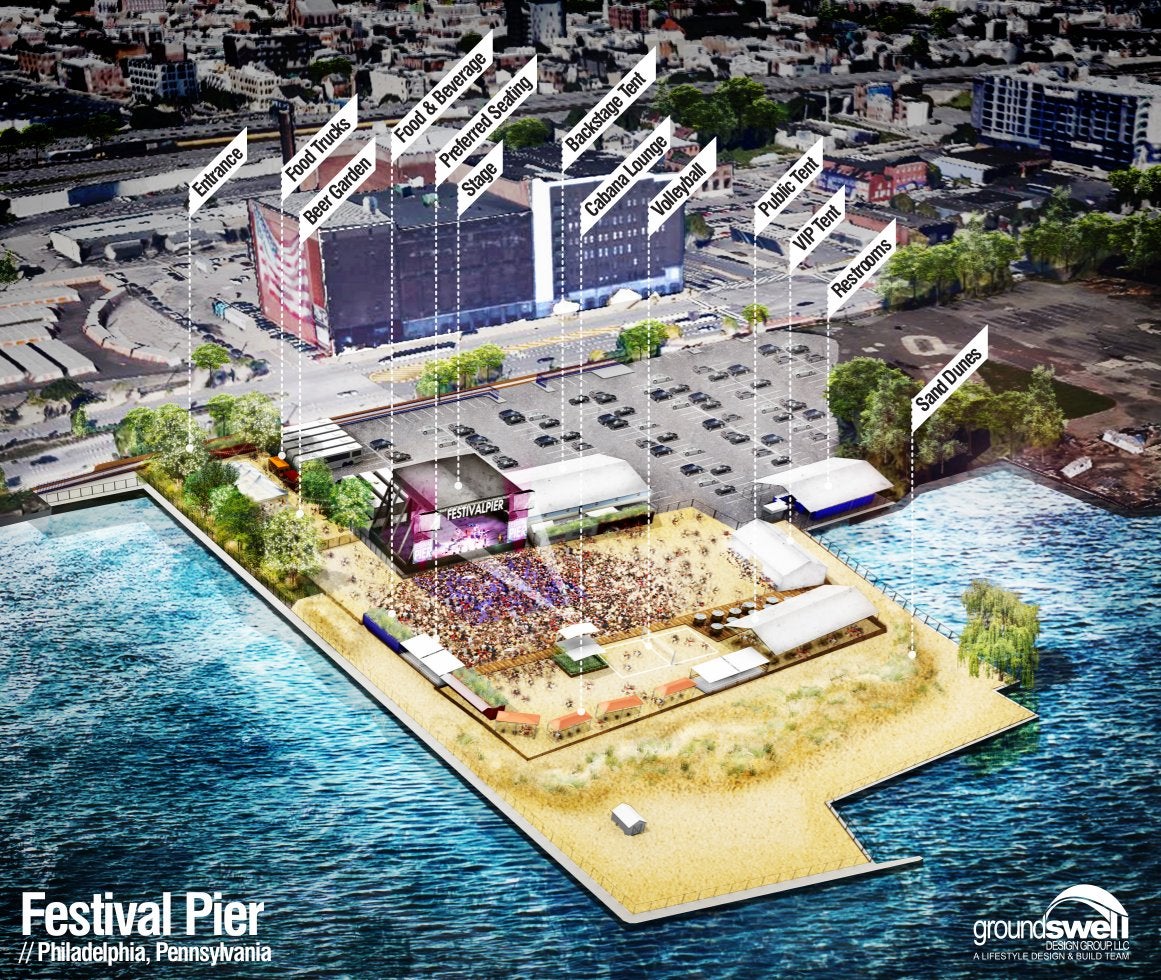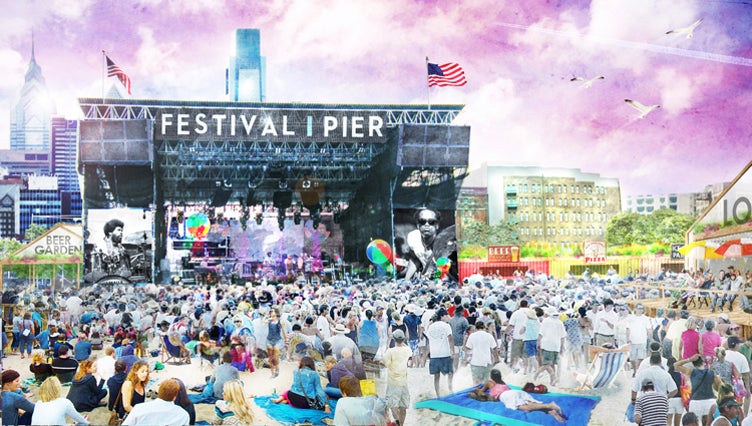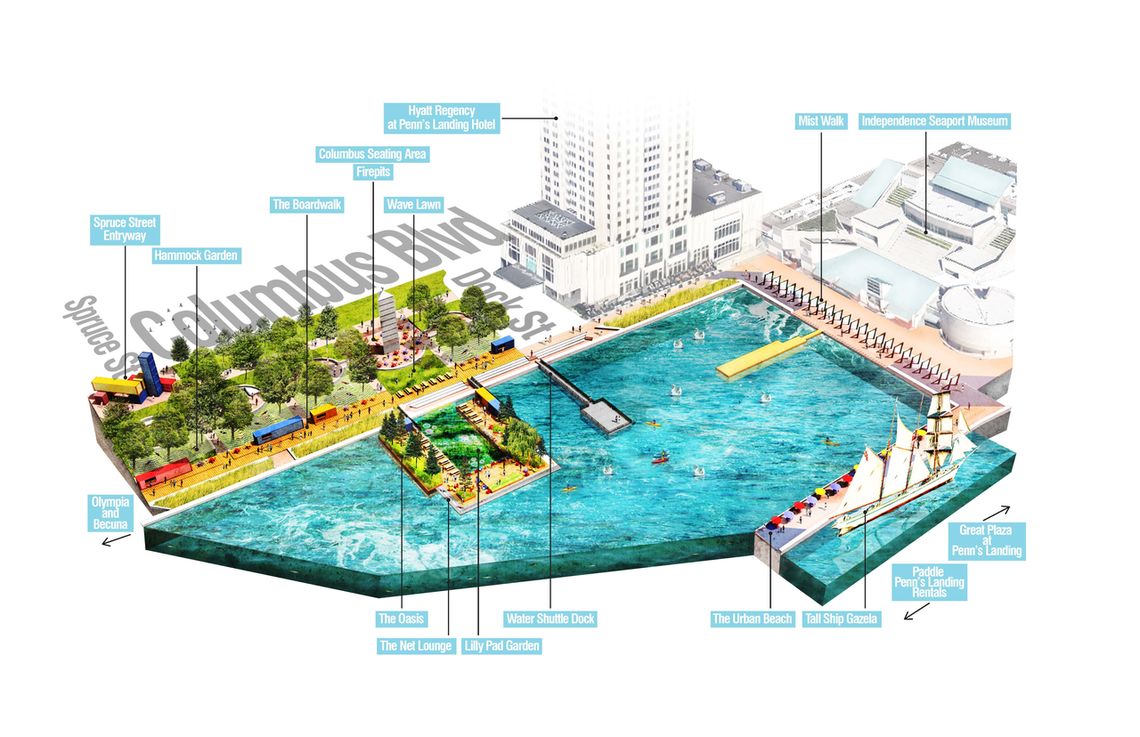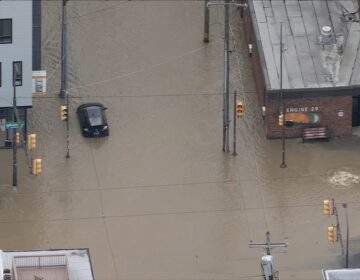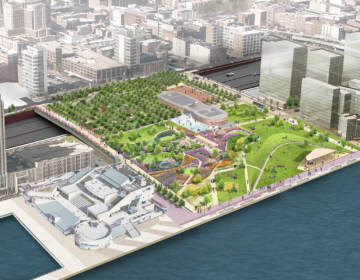Waterfront Working: 3 signs of progress on the Central Delaware
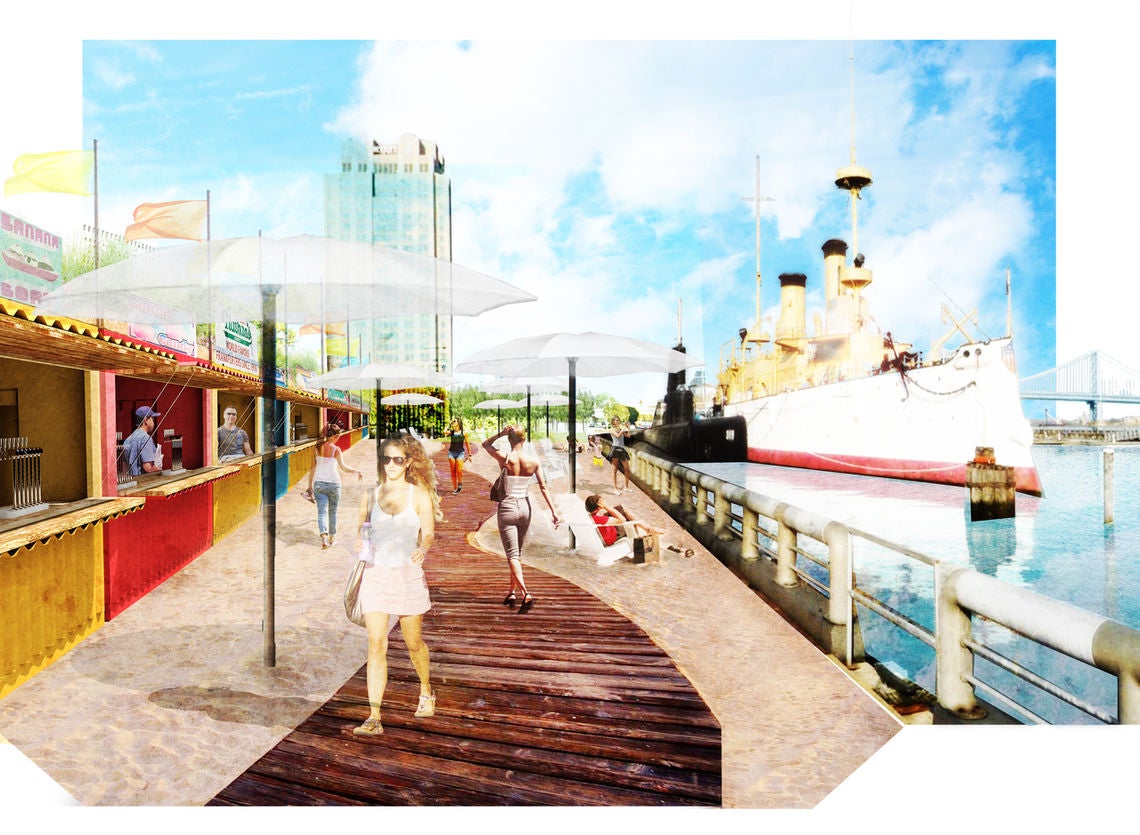
In June 2013 City Council passed a zoning overlay that gives the Master Plan for the Central Delaware its teeth. Now, a year later, there are positive signs that Philly is actually getting it right when it comes to building a better future for the Central Delaware Waterfront.
The Central Delaware Overlay, enacted a year after the Master Plan was adopted, makes the waterfront plan real through special zoning controls. It gives developers clear and predictable expectations for by-right development that conforms to the Master Plan by setting use and height restrictions, public space requirements, and allows greater density in exchange for public amenities like trail segments.
That’s a good thing since most of the private developments proposed in the months after the city adopted the Master Plan for the Central Delaware were absolute duds that shortchanged the plan. Developers fought the idea of river streets that help neighborhoods connect to the water, they failed to design quality pedestrian experiences, and sought variances for significantly greater height than planners believe the waterfront can support.
As the private sector struggled to get the plan’s message of a more urban and connected waterfront, the Delaware River Waterfront Corporation has been busy planning better public spaces along the river, from waterfront parks to trail segments and connector streets. These incremental moves lay important groundwork for larger projects ahead like the expansive, expensive Penn’s Landing’s overhaul of our dreams.
Lately things are looking up on the river. Two recent proposals along the Central Delaware Waterfront put the zoning overlay’s viability to the test and promising seasonal projects aim to create vastly better public environments on the waterfront this summer. Score three for smart waterfront planning.
Adios Auto-centricity
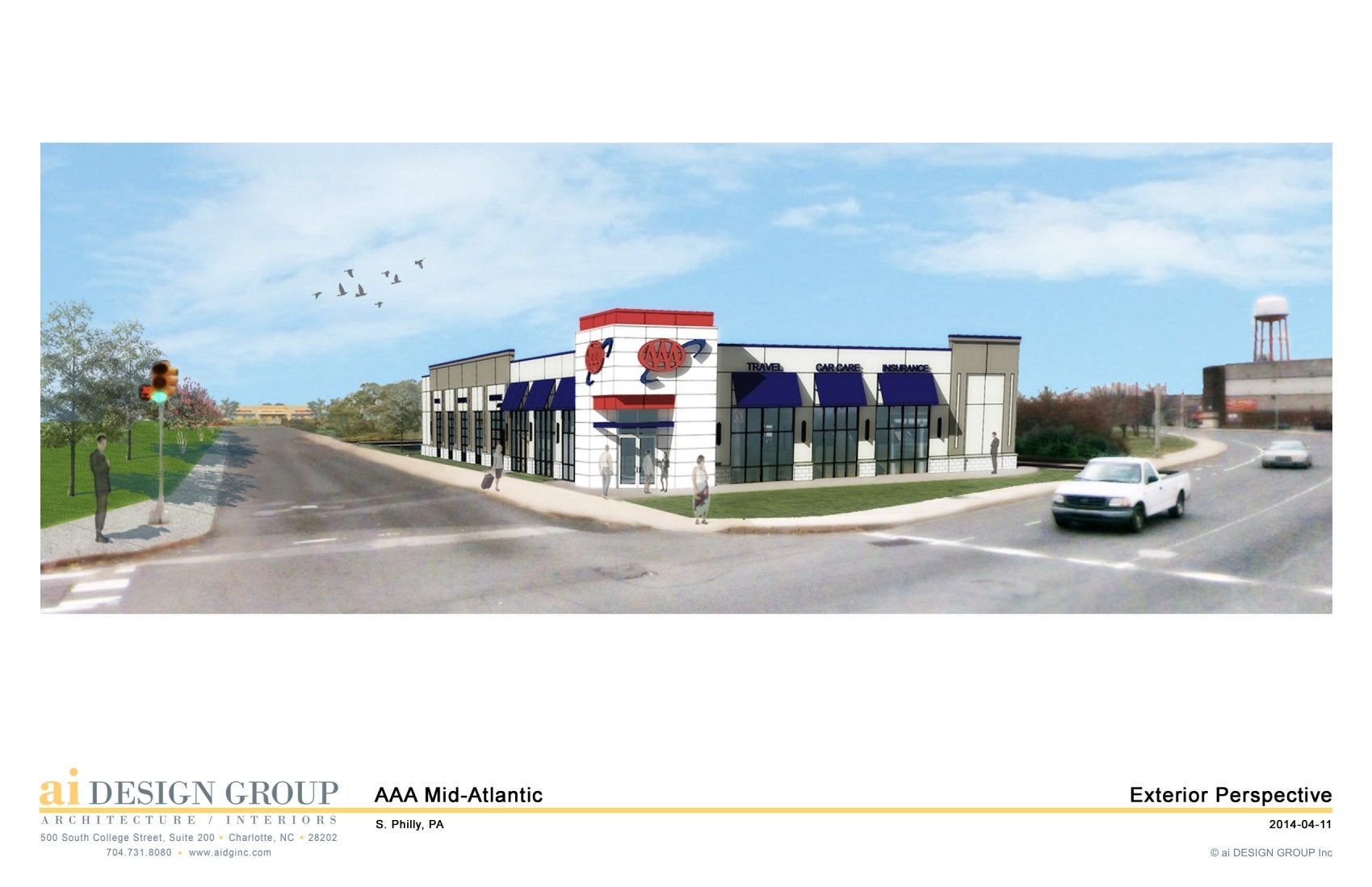
AAA was planning a service facility at South Columbus Boulevard and Tasker Street, and after months of back and forth – as PlanPhilly’s Kellie Patrick Gates has chronicled – the Planning Commission rejected the project in May.
Yes, the southern end of the Central Delaware boasts a waterfront Wal-Mart and suburban-style shopping centers abound. But these developments, dropped like UFOs in acres of surface parking, should never be the norm again. Auto-oriented uses are not permitted under the Master Plan and the waterfront zoning overlay.
The city actually issued AAA’s initial permit in error, but AAA was trying to game the system anyhow. AAA applied for its permit just before the new zoning overlay went into effect. Trouble was the project didn’t meet the old overlay’s standards either. To move forward AAA had to present a Plan of Development to the Planning Commission in late May.
It was encouraging to see commissioners rightly reject the AAA development, siding with advocates and the master plan itself. The goal is a waterfront that’s more urban and urbane in character. It may not look that way now but this is a long-term vision. We have to start aiming higher.
Rather than file a lawsuit as threatened, AAA should find a more appropriate site- say on Oregon or Washington avenues – that isn’t on the waterfront.
Bona Fide Bonus
In 2012 when Ensemble Real Estate initially came forward (its second time around in a decade) with its proposal for “Marina View” on North Columbus Blvd. near the Benjamin Franklin Bridge, waterfront advocates balked. It was clunky, blocked the bridge inelegantly, and created a dead zone along the street thanks to a flood-zone parking garage. Instead of offering much in the way of public benefits, Ensemble asked planners to approve a building taller than the 100-foot height limit. The planning commission, eager to prove that the Central Delaware is open for development, didn’t make much of a stand.
Marina View, like too many projects, was defended by the kind of logic that is endemic in Philadelphia: Any development is good development. No matter how desperate Philly is, we know better.
Through 2012 negotiations did improve Marina View’s design, but Ensemble ultimately opted to move on. Ensemble sold 250 N. Columbus Blvd. to PMC Property Group for $5.5 million in January. Now there is a better development proposal to consider, and it’s a key test of the zoning overlay and a new way forward.
As PlanPhilly’s Kellie Patrick Gates recently reported, PMC proposed a new project called One Water Street that takes advantage of bonus incentives in the zoning overlay that allow extra height in exchange for public amenities. The height limit is set at 100 feet but developers may earn the ability to build higher by providing public benefits – including public art or the construction of trail segments. This case is an important indicator for what can be built under the zoning restrictions – if it is built.
Tradeoffs sought by One Water Street in exchange for maximum additional height:
- 20% of the site as public space = up to 24 additional feet
- Mixed-income housing = up to 48 feet additional feet
- Green building = up to 48 additional feet
L&I needs to verify that the proposal in fact earns these incentives, but Planning Commission staff review suggested that the proposal meets the requirements to earn sufficient bonuses to reach 170 feet.
That’s a lot of extra height. Is it worth it? Given the project’s site next to the bridge there will be those who gripe that it blocks views of the bridge’s imposing base. Others don’t think the design is particularly good. But the project is already a success by at least one measure: PMC is the first developer able to work within the zoning constraints to propose a waterfront project. That’s an important sign that the base zoning and overlay are not so burdensome that they discourage new development – a charge we heard a lot about during the debates over the viability of the master plan and overlay.
As PlanPhilly’s Jared Brey recently reported, members of the Planning Commission’s Civic Design Review committee pushed PMC to make sure that the public spaces will be built with quality materials and that they read as real public spaces with clear connections to other nearby amenities.
The true measure of success will be whether or not the tradeoffs are worth it, particularly if One Water Street’s site plan and public spaces contribute to an actual public realm along the waterfront. This project has the potential to extend the energy from the bubbling hub around the Benjamin Franklin Bridge (FringeArts’ new headquarters and the Race Street Pier) northward. Going forward it’s going to be interesting to see how the public spaces exchanged for extra height turn out. Will they be pleasant but inert spaces outside of tall buildings or will they be truly public places where people actually want to be?
A Welcome Waterfront
It’s gratifying to watch the Delaware River Waterfront Corporation keep working to humanize publicly-owned spaces along the waterfront. From Festival Pier to the marina at Penn’s Landing, new temporary amenities will greet visitors all summer. They’re sort of a test balloon to see what kinds of interventions will work and where.
At Festival Pier, a beach-themed environment mellows the venue’s harsh parking-lot-on-water vibe, designed to get visitors thinking they’re at the shore not standing on an ex-incinerator site. We’ll also be able to enjoy Spruce Street Harbor Park at the Penn’s Landing marina come June 26, a summery version of Waterfront Winterfest featuring a mister walk, pebble beach, barge “oasis,” hammocks along the water, boardwalk, and of course refreshments.
Each of these projects capitalizes on some simple ideas: Work with what you have to create inviting places along the water where people want to be. Give people chances to experience the river itself. Temporary interventions can help capture and sustain public interest, get people to see the waterfront through fresh eyes, and let planners experiment with the spaces. That and the universal truth that good food and cold beer never hurt.
WHYY is your source for fact-based, in-depth journalism and information. As a nonprofit organization, we rely on financial support from readers like you. Please give today.



